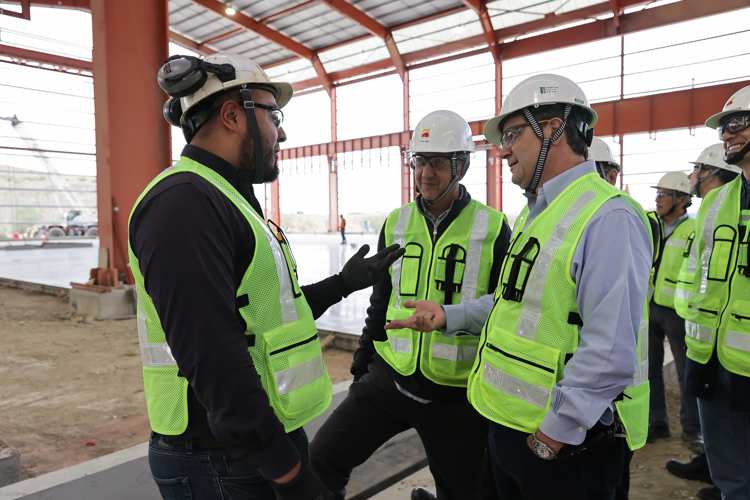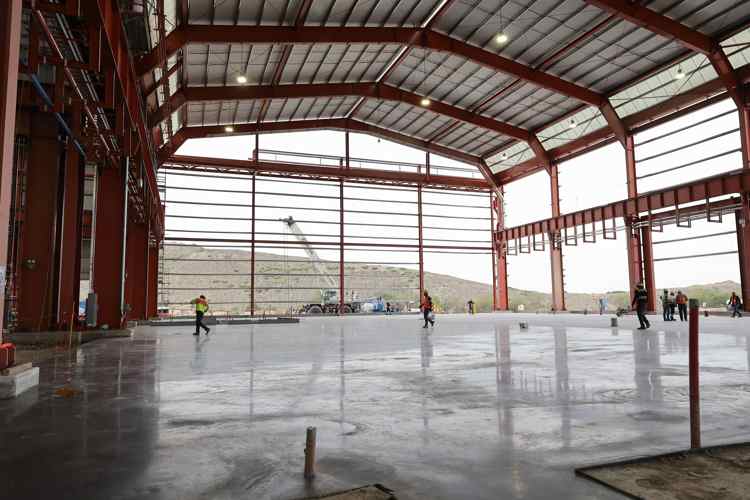
Ternium's state-of-the-art steel mill in Pesquería, Mexico, marks the latest ambitious investment plan on its decarbonization roadmap, aiming to produce the lowest Carbon Intensive Steel for the Automotive industry.

The latest major initiative on Ternium's expansion agenda is building a new mill of 2.6 million ton Capacity that will produce and export the high-quality steel needed by the automotive industry in the U.S., in line with the USMCA's regional value content requirements, using natural gas as reductant agent of iron ore, a transition fuel, efficient use of electric furnaces using preheated scrap, and cutting-edge Carbon Capture & Usage (CCUS) technology in the DRI (Direct Reducing Iron) enabling CO2 to be used by the Food Industry (e.g., sparkling beverage). The new steel mill located at Pesquería, Mexico, will significantly contribute to the company's 2030 goal of a 20% reduction in CO2 emissions intensity.
Pablo Bassi, Chief Industrial & Engineering Officer (CIEO) at Ternium, explains that the company's three-pronged decarbonization strategy envisages the use of clean energy sources, the use of cutting-edge technology in the casting and melting process, and carbon capture, use, and storage options (CCUS).
"Our company has been working on its long-term regional sustainability and expansion plan for several years, with decarbonization occupying an increasingly important place on the agenda. Today, we're using natural gas not only as a fuel source but also as a reduction agent. This key energy transition fuel is abundant and puts Mexico in a very advantageous position on the decarbonization map. Looking further, we've developed the technology to enable us to switch to hydrogen as soon as it becomes more readily available. This is part of our commitment to achieving a 30 to 50% clean energy target for powering our Mexican facilities, as our customers are increasingly requesting us to show how we're contributing to decarbonization by using clean electricity."

At the same time, the new facility, which should be operational by late 2026, incorporates several cutting-edge technologies developed by the group that will significantly improve CO2 emissions and Ternium decarbonization efforts.
According to Bassi, there are three steel production routes worldwide:
As regards the production process, he explains, "Unlike many of our facilities in Brazil and Argentina, which use Blast Furnaces producing more than 2.2 tons of CO2e per ton of steel, in Mexico, we're using new Energiron technology developed by the Techint Group's R&D arm Tenova, getting a significant emission intensity reduction of 0.8- 1.5 Tons of CO2 depending on the site based in natural gas-fired DRI plant and electric-arc furnace (EAF).
This significantly contributes to mitigating Scope 1 and 2 emissions: "For instance - Bassi continued -, at our Guerrero facility in Monterrey, we produce 0.8 tons of CO2 steel per ton. Furthermore, DRI means we can use the carbon produced during the process at no extra cost as it's separated and captured in a chimney. At this point, we have several options: either to vent it as emissions, compress it, and sell it to the carbonated drinks industry, which we've been doing for the last 25 years, or store it deep underground, the most permanent of the three. We've been studying this last option with Tecpetrol's Energy Transition Unit, and technically speaking, there are many viable possibilities, but the main stumbling block is the high cost and lack of regulation. "
The CIEO points out that when the new mill becomes operational in late 2026, it aims to reach the lowest carbon intensity steel, in the range of 0.7-0.4 tons of CO2e per ton of steel (considering Scope 1 and 2, depending on the renewables energy share, scrap ratio, and CO2 sold or storage), making a significant contribution to its overall decarbonization goal till 2030.
However, "this is only attainable using the scrap route at the moment, and in parallel, the world is asking for higher-grade steel that uses iron ore."
Nevertheless, Bassi declares that it's worth noting that hydrogen and CO2 storage are part of our long-term decarbonization strategy, "As this is a relatively new area, we're still studying options, but there are many viable possibilities regarding use and storage."